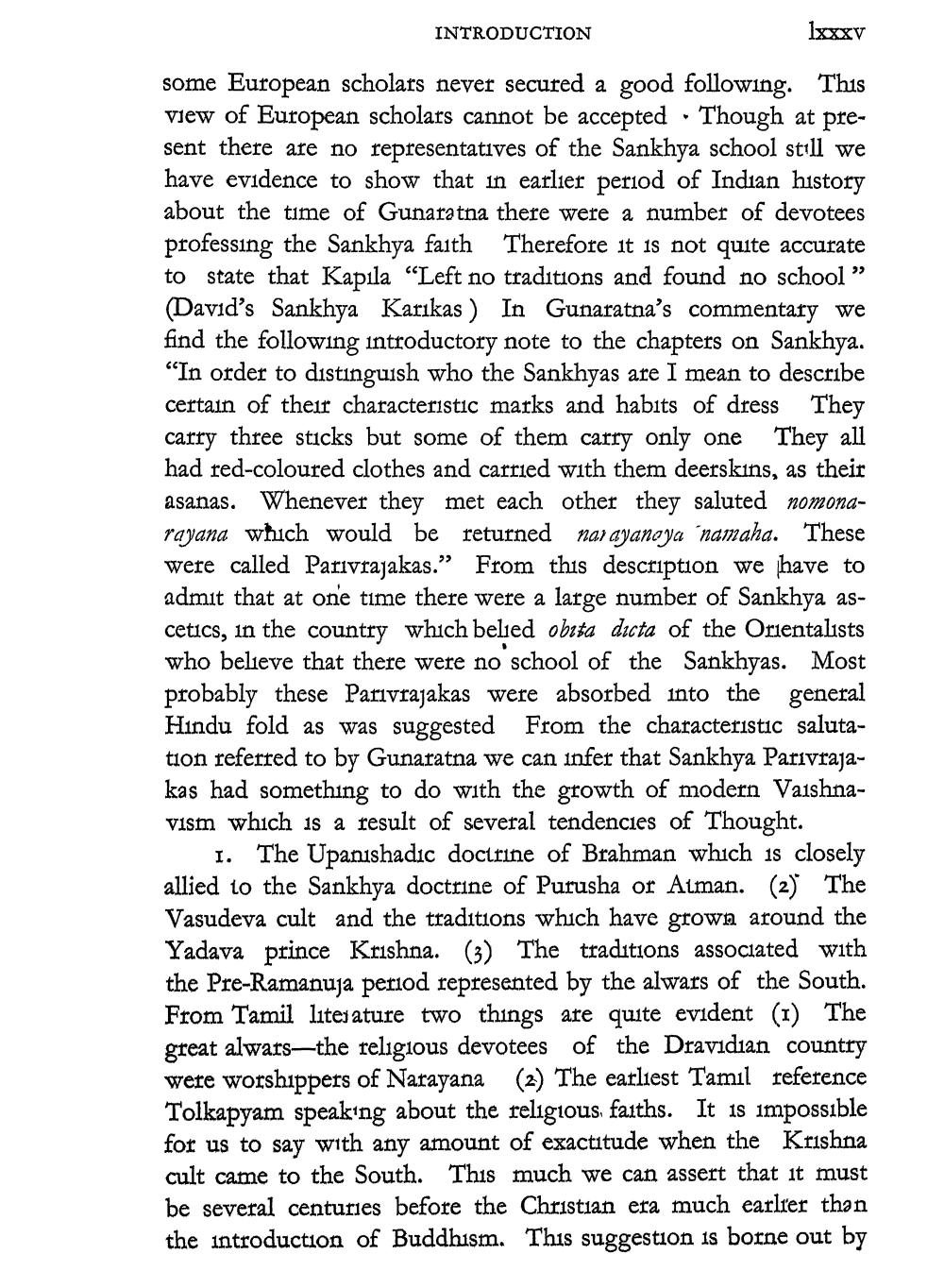________________
INTRODUCTION
1xxxv
some European scholars never secured a good following. This view of European scholars cannot be accepted. Though at present there are no representatives of the Sankhya school still we have evidence to show that in earlier period of Indian history about the time of Gunaratna there were a number of devotees professing the Sankhya faith Therefore it is not quite accurate to state that Kapıla "Left no traditions and found no school” (David's Sankhya Karikas ) In Gunaratna's commentary we find the following introductory note to the chapters on Sankhya. “In order to distinguish who the Sankhyas are I mean to describe certain of their characteristic marks and habits of dress They carry three sticks but some of them carry only one They all had red-coloured clothes and carried with them deerskins, as their asanas. Whenever they met each other they saluted nomonarayana which would be returned narayanaya 'namaha. These were called Parivrajakas.” From this description we have to admit that at one time there were a large number of Sankhya ascetics, in the country which belied obrta dicta of the Orientalists who believe that there were no school of the Sankhyas. Most probably these Parivrajakas were absorbed into the general Hindu fold as was suggested From the characteristic salutation referred to by Gunaratna we can infer that Sankhya Parivrajakas had something to do with the growth of modern Vaishnavism which is a result of several tendencies of Thought.
I. The Upanishadic doctrine of Brahman which is closely allied to the Sankhya doctrine of Purusha or Alman. (2) The Vasudeva cult and the traditions which have grown around the Yadava prince Krishna. (3) The traditions associated with the Pre-Ramanuja period represented by the alwars of the South. From Tamil litej ature two things are quite evident (1) The great alwars—the religious devotees of the Dravidian country were worshippers of Narayana (2) The earliest Tamil reference Tolkapyam speaking about the religious faiths. It is impossible for us to say with any amount of exactitude when the Krishna cult came to the South. This much we can assert that it must be several centuries before the Christian era much earlier than the introduction of Buddhism. This suggestion is borne out by




